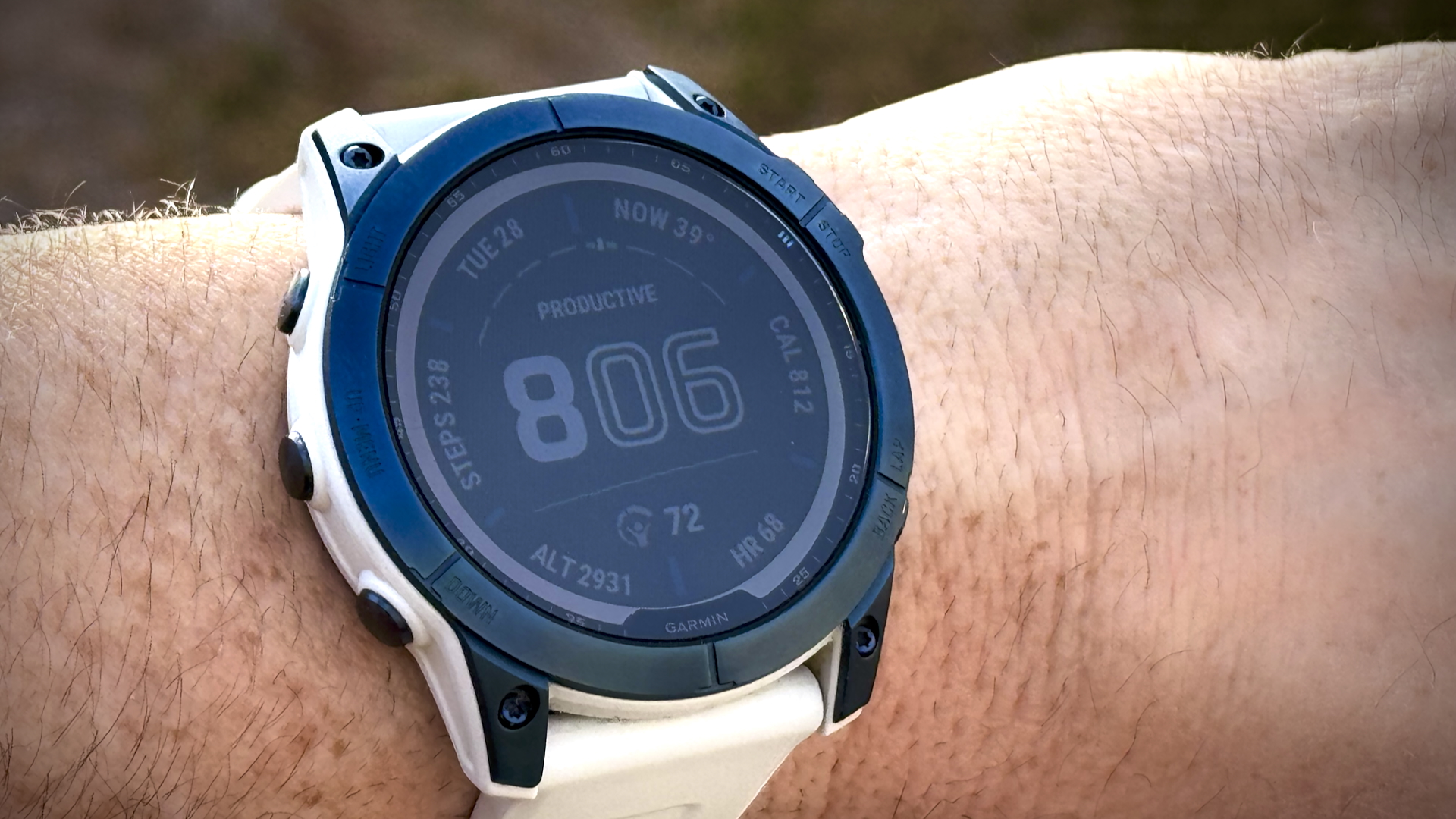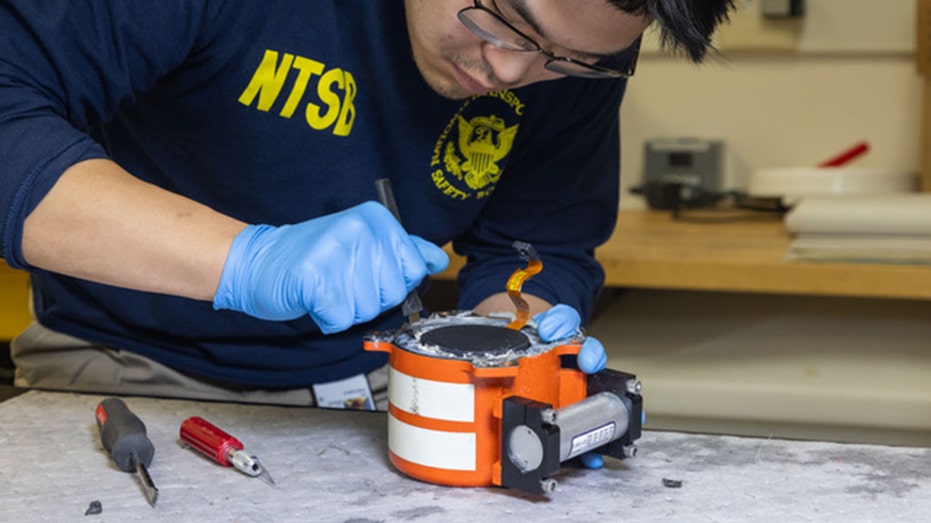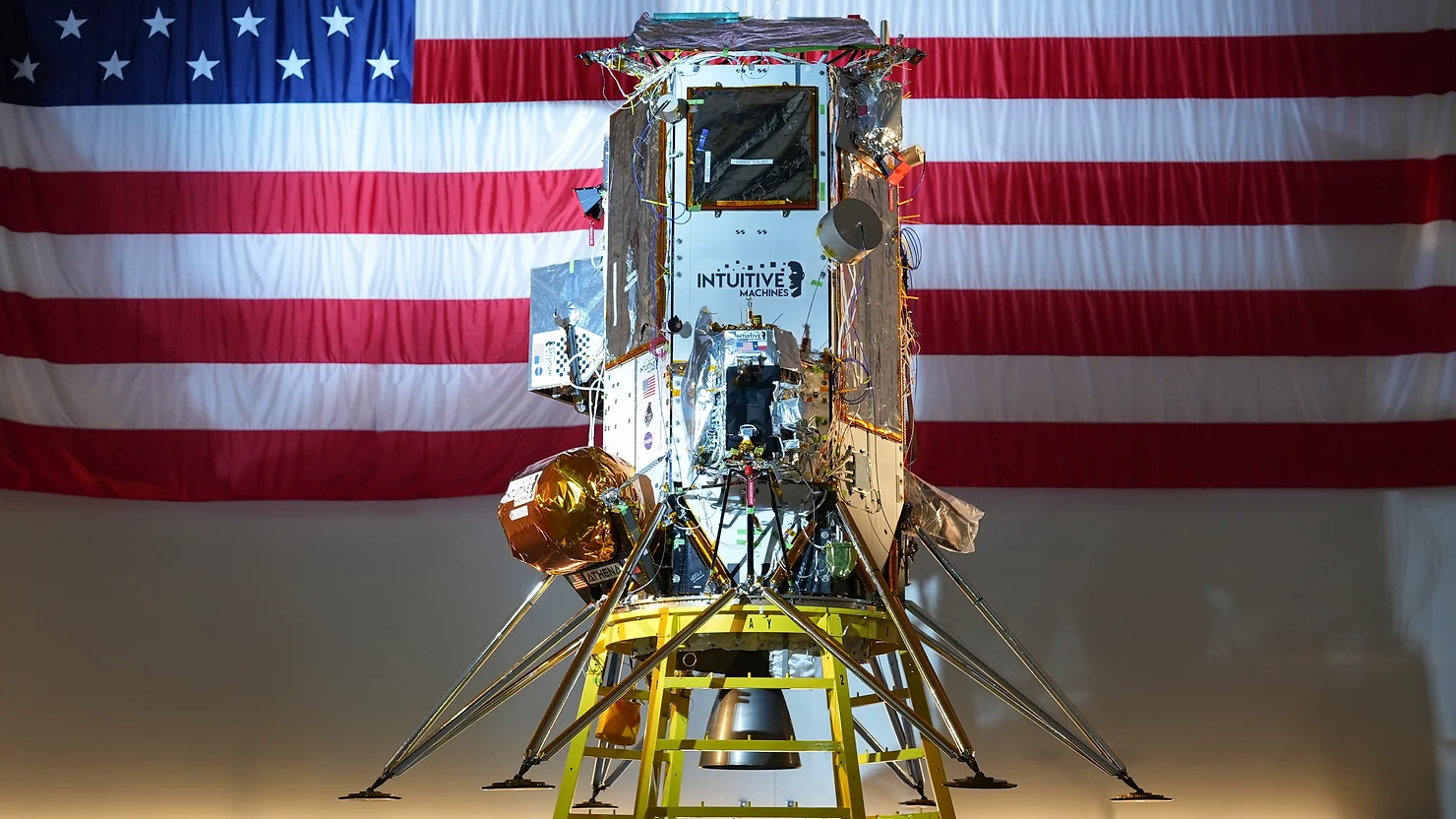Garmin Fenix 7X Sapphire Solar Review: It’s an OBDII System for You
A GPS smartwatch that helps beginners gamify their fitness with car-like data and takes elite athletes to new levels. The post Garmin Fenix 7X Sapphire Solar Review: It’s an OBDII System for You appeared first on The Drive.

I’ve been testing the Garmin Fenix 7 Sapphire Solar smartwatch for half a year and I want to start out with an acknowledgement. I’m not a fitness influencer. If you look at me, you probably wouldn’t even think I’m a fitness enthusiast. Doctor visits start with the nurse taking my vitals asking if I’m feeling OK since my heart rate is unusually low for someone who clearly spends more time behind a spacebar than a handlebar. This is why I’m well qualified to review a fitness product used by elite athletes. In a way that shows the rest of us that technology can make exercise easier, and even fun.
Since you’re reading this here, there’s a good chance you’re a car enthusiast. After just a few days of data gathering with my first smartwatch, I began comparing it to OBDII systems and the data logging instruments I use testing cars. Everyone is trying different methods to gamify fitness, from video games to social media platforms for bragging about yer gainz, bro. None of those really worked for me, but having real, scientific data has definitely changed my approach to fitness. The Garmin Fenix 7X, took it to another level compared to my Apple Watch. I’ve been through a few different Apple Watches. But, from here on, when I make comparisons I’m referring to my current Ultra 2.
I need to say a couple of things for the record. This is a product review; nothing here should be taken as medical or fitness advice. I use myself and my experiences as an example only. Garmin, Apple, and every other company making smartwatches and wearables would like you to know that they are not selling medical or diagnostic devices and the data is not to be used for medical purposes. Social media audience size has no correlation to actual knowledge. If you have any concerns about your health, go see an actual doctor.

The Bottom Line
Amazon currently has the Garmin Fenix 7X Sapphire Solar as low as $619.99
The first thing that stands out with Garmin smartwatches is battery life. If I use my Apple Watch for monitoring my health data, and occasional notifications from my phone, it needs to sit on a charger at least every three days. If I use the Fenix 7 in the same way, it can easily go over three weeks. Part of this comes down to Garmin’s transflective screen. It’s an LCD display that reflects ambient light instead of using a backlight.
It’s far less power hungry than something like an OLED and includes solar cells to help power the watch. If I have both watches charged to 100% and use them for workouts where they are constantly sampling health and GPS. On top of normal use and sleep tracking, my Apple watch will need a recharge the following morning. The Fenix 7X can go a whole week of workouts, normal use, and sleep tracking all on a single charge.
The 7X model comes pre-loaded with topographic maps which work with dualband GPS sensors. I’ve used it for some day hiking and even logging walks around my neighborhood. For hiking, you can set waypoints, preplan routes, and even track yourself on unplanned routes and get directions back to where you started if you get turned around.

Besides maps, there are over 30 different preloaded activities you can log with the Fenix 7X. It includes all the cycling, running, swimming, hiking you would expect, but it even includes things like ATV riding, surfing, etc. It will connect with multiple sensors, for cycling it’ll read your power meter, and cadence. If you have a smart trainer, not only will it record data, but if you have a set workout in the watch, it will control resistance.
As a gadget geek, I will admit the screen isn’t anywhere near as crisp and colorful as my Apple watch. Garmin does have other watches with OLED screens that look as good, but the UI still isn’t as slick if you want a wrist-tablet. For outdoor use, the combination of physical buttons, connectivity, and long battery life make it a better choice. Lastly, Garmin has fitness coaching and health monitoring software that is free. To get workout plans, body battery monitoring, and really use all the data from an Apple Watch, you’re going to have to pay for apps to take advantage of it.
I can use the Garmin Fenix 7X every day, without having to constantly shovel money into it. It gives more than enough data to satisfy me, a professional data nerd. Garmin has released the Fenix 8, which adds a microphone and speaker, plus is available with an AMOLED screen. If those things are important to you, look at the newest model; if not, the Fenix 7 models are still available, and in most places, discounted.
| Garmin Fenix 7X Sapphire Solar | |
|---|---|
| Ease Of Use | 9/10 |
| Quality | 10/10 |
| Ruggedness | 9/10 |
| Value | 8/10 |
| Overall | 9/10 |
What’s The Point Of A Smartwatch
It’s been almost five years since I started wearing a smartwatch on the recommendation of my doctor. The first was an Apple Watch Nike. I was having a few vague symptoms and after a variety of inspections, dyno testing, and wearing a medical-grade portable ECG, called a Holter Monitor, for a few days, he identified a heart irregularity. I was diagnosed with supraventricular tachycardia (SVT). It’s an arrhythmia where the upper chambers of the heart beat irregularly compared to the lower chambers caused by improper electrical signaling. I have a misfire in my heart caused by a faulty ignition system and smartwatches help me track it. I can feel it. So, I don’t need a watch to tell me it’s happening. But logging conditions and performance before and after is the data I’m after.

The same time I was diagnosed with SVT, I not surprisingly became more concerned with my overall health and fitness. Training isn’t a new thing for me; I am a middle-aged cliche. In my 20’s I was a college athlete. Regular exercise continued but declined progressively into my 30’s, and once in my 40’s my career and family life meant very little real training. Along with a heart condition, I was hypertensive, weighed 255 pounds, and was on a path to type 2 diabetes. This all happened in early 2020. So, some stuff happened, it interrupted my fitness journey, and then I started over again.
I began by just tracking activity and some basic workout metrics but mostly I was using a smartwatch just to keep track of my heart. Then, sleep monitoring became a thing. I started combining that with another app to track diet, what time I ate etc. Back then, Apple had very little interest in bicycles. I had to use other means of tracking those metrics. I was also using a couple of different paid apps to interpret the data from my Apple Watch. I eventually upgraded my indoor bike to a Wahoo Kickr Bike Shift, a high-tech stationary bike with a power meter, and using software called Zwift, a gamified cycling simulator, to create workouts. Changing my diet and exercise dropped me to about 230 pounds, but I plateaued.
Then, I got the Garmin Fenix 7X. First, the Garmin does everything I was getting from the fitness tracking software, the Zwift membership. It controls the Wahoo bike, it has all the indoor and outdoor cycling functionality baked-in, and it has free coaching programs. Since getting the Fenix, I’ve dropped another 15 pounds, my BP is normal, and I think my hair’s better, too—maybe unrelated.
Smartwatches, especially the Fenix 7X Sapphire Solar, aren’t cheap. At the time I started testing, it was $900.00, but it’s now down to $620.00. For comparison, the Apple Watch Ultra 2 is $799.00. So everything is relative, but with the savings on the watch and not having to pay for apps, the savings are considerable.
The Fenix Is An Onboard Diagnostic System. Don’t Worry, It Won’t Monitor Emissions



In 1996, all new gasoline-powered cars in the United States had to be equipped with a second generation Onboard Diagnostics system, or OBDII. It uses a whole array of sensors to monitor the performance of your car’s engine and emissions systems. It watches everything from fuel trims and misfires to catalytic converter and EGR systems. If everything isn’t running within specified parameters, your car locks you out, turns on the hazard lights, and electrifies the door handles. No. I’m kidding, it just gives you check engine light in the gauge cluster.

The Fenix 7X monitors your body in a similar way to an OBDII system. Using optical sensors on the bottom of the watch, the Elevate V4 can measure heart rate, heart rate variability and blood oxygen saturation. With this data, it can also calculate respiration rate. The Fenix 7X also has sensors for temperature, barometric pressure, gyros, accelerometers, and even a compass.



Most smartwatches have some or all of these sensors, but it’s the ability to process all that data that matters. Garmin acquired Firstbeat Analytics about five years ago to improve its data processing ability. Firstbeat was one of the pioneers in physiological analysis of heart rate variability (HRV). The efficacy of these methods are all based around models built from data, and Firstbeat has data going back two decades. Heart rate variability is the measurement of time between heart beats. It seems counterintuitive, but when you’re relaxed and recovered, your HRV is more irregular.
Garmin watches need about three weeks of data to build a baseline. Afterwards, it uses HRV data for determining recovery/training readiness as well as stress levels. This becomes part of your Body Battery measurement. Using data gathered from the watch, along with algorithms built using Firstbeat’s piles of data, your VO2 Max can even be calculated outside of a laboratory setting. I haven’t had mine tested since college, but I still remember, the traditional method of testing kinda sucks.
Speaking of traditional testing methods that suck; Garmin can also calculate your lactate threshold and functional threshold performance (FTP). When I first started training again, I did a few FTP tests on my Wahoo bike using Zwift. They consist of rising resistance in set intervals, basically until failure. OK, there was a point in my life, I loved suffering through stuff like that. I don’t anymore and if I can just do a lot of riding at sane levels and I can get an accurate approximation, I’m here for it. “Garmin, all the results with none of the puking.” Probably not something they’ll put on a T-shirt.
The Verdict: Garmin Fenix 7X Sapphire Solar

There are plenty of ways to organize smartwatches into countless overlapping Venn Diagram disks. For me, the first thing I want to know: is it designed to be a shrunken smartphone whose function is defined by apps or, is this a device built for specific tasks and it also happens to do some of the stuff my smartphone does? The Garmin is first and foremost a GPS fitness device. It looks like a watch, not a tiny iPad. It’s meant to be used in the field, while sweaty, working hard, and even when wearing gloves. But, for most people the big thing will be there’s not even an option for cellular service. You’ll need to bring your phone if you think you may have a mechanical you can’t fix roadside.
It feels more like a watch. The Fenix 7X, like most of Garmin’s watches, can be operated solely with its five physical buttons, or in combination with, or just, the touchscreen. The screen is customizable and configurable in nearly infinite ways. You can choose faces that look identical to an analog watch, or go full digital. I prefer full digital and besides the time, I normally have day and date, temperature, total current calorie burn, current heart rate, altitude, steps, and my body battery level. With single button pushes.
I can access a list of configurable Glances, go straight to the workout menu, or get the main menu. With a double press of the backlight button, I can turn on the flashlight. Oh yeah, this thing has a real flashlight with adjustable brightness, white or red light, and it can be used as a strobe for exercising at night, or as an SOS beacon.


If you’re a cyclist, this incorporates into everything you already do, or like me, hope to own. From power meters to heart rate straps and core body temperature sensors, they will all integrate with the Fenix 7X Sapphire Solar. As mentioned above, it works seamlessly with my Wahoo Kickr Bike. I haven’t mentioned it yet, but I can download music to the watch and it will connect to my Shokz headphones. Really, the only reason I need to take my iPhone with me while exercising is if I want to text, call, or take selfies. And, I mean, without selfies did your workout even happen?
There is a newer version of the watch, the Fenix 8. It is worth checking out, but at $620 the Fenix 7X Sapphire Solar is a heck of a deal. I still like my Apple Watch Ultra 2. But it just isn’t as focused on fitness and requires separate paid apps to even get close to the functionality. I will say this, I have the 51mm Fenix 7X and even next to my Ultra 2, the thing is a tank. It’s huge. Garmin made a 47mm model, but they’re getting harder to find. At this point, if I had to choose between Apple and Garmin as my only smartwatch, I’d take the Garmin.
The post Garmin Fenix 7X Sapphire Solar Review: It’s an OBDII System for You appeared first on The Drive.












































































